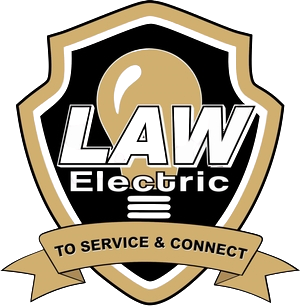
Frequently Asked Questions

YOUR QUESTIONS. OUR ANSWERS
You will find answers to all of your most common Electrical Services related questions located here.
We offer an assortment of lighting items, including enriching pilgrim, cobra head, directional floodlights, and security lights. We can tweak the intends to fit any lighting need.
Incessant breaker excursions could be an indication that the circuit is being overloaded someplace on the property. A wire, attachment, or appliance could be overheating, which could ultimately cause a fire.
A light that rashly wears out in specific light or attachment indicates a poor electrical association causing heat to develop in the light. Distinguishing the helpless association and repairing it should resolve the issue.
Truly. A free module a source brings about high electrical obstruction. Electrical opposition causes overheating, which frequently brings about a fire. An overheating source may likewise harm the associated device or appliance. Supplanting an electrical source is a moderately reasonable errand.
A breaker could be free, or a hot breaker is permitting current to stream among hot and impartial. Either issue ought to be reviewed quickly by a certified electrician.
The National Electric Code (NEC) requires new installations to give a second impartial on every 220V appliance. You can supplant the four-prong rope with a three-prong string. However, the more secure choice is to redesign the electrical inventory of your 220V appliances.
A few districts and urban areas permit do-it-without anyone else's help wiring. However, you should have a license, and your installation should be examined by the city or region electrical reviewer. A few areas require an ensured contractual worker to introduce electrical wiring. Contact your nearby government for the particular laws in your general vicinity. In any case, it's a smart thought to employ a licensed electrician.
More voltage at similar cycles every second (cps), which implies more power to the appliance. For the most part, 220V is utilized for huge appliances. 110V is utilized for little appliances. Utilizing a 110V appliance in a 220V source will wear out the appliance. Utilizing a 220V appliance in a 110V source will make the appliance run moderate or not in the slightest degree.
A surge protector is an appliance that shields an electrical device from voltage spikes. A surge protector is intended to restrict the voltage stream to an electric device by impeding any undesirable voltages over a protected edge.
In Winnipeg, MB, we are regularly influenced by typhoons, leaving whole networks without power for quite a long time. Notwithstanding Winnipeg, MB, tropical storms, the maturing US power network entangles the repair and rebuilding of power after a calamity.
Decide the amperage requirements. Ascertain the absolute area of decent space, excluding incomplete storm cellar, loft, garage, unfinished plumbing spaces. Inventory your electrical requirements: heating system, air conditioning system, every electrical appliance (dryer, range, dishwasher, hot tubs, pools) and so forth, and afterward contact an electrician with this data.
An electrical installation is a combination of electrical equipment installed from a common electrical supply to fulfill a particular purpose.
Where to start with design of electrical installation? Determination of the conditions for protection of people, Calculation of the conductor cross-sections, Protection for each level in the installation, and. Selection of the appropriate electrical devices and equipment.
Installation the act or process of making a machine, a service or the act of installing something. Maintenance the upkeep of property or equipment. Electrician - a person who works on and repairs electrical equipment or one who installs, maintains, operates electrical equipment.
The electric power line enters our house through three wires- namely the live wire, the neutral wire and the earth wire. To avoid confusion we follow a color code for insulating these wires. The red wire is the live wire, and the black wire is neutral. The earth wire is given green plastic insulation.
The most common sizes you'll find in residential work are 14-gauge and 12-gauge. Larger appliances such as electric stoves, electric water heaters, electric dryers and central air units will often use 10-, 8- or even 6-gauge wire.
Electrical wiring installation costs $2 to $4 per square foot on average. The wiring alone costs $6 to $8 per linear foot, while structured wiring and heavy-duty data cables which handles communication and entertainment devices add $2 per foot.
Tools are valuable items that make work become quicker, simpler, and more convenient. They have made tasks like repairing and building much easier, turning some of the most tedious projects into something that only takes a short while to accomplish.
10 Common Electrical Problems; Frequent electrical surges. ... Sags and dips in power. ... Light switches not working properly. ... Circuit breaker tripping frequently. ... Circuit overload. ... Lights too bright or dim. ... Electrical shocks. ... High electrical bill.
A beginner's guide to wiring your home Load calculation. It is better to postulate your electrical needs before you even buy wires for your home. Place your concealed conduit PVC pipes in position. This is the second and most important part of wiring your home. Color coding of wires. Passing wires through the pipes, Earthing, Fixing the switchboard.
The common type of home electrical wiring is non-metallic, or NM, cable. You may also know it as Romex cable, which is the most popular brand name of this type of electrical wiring. NM cable is usually three or more individual conductors.
PVC conduit is always a great choice, primarily because of the economy and it also protects from water that may seep into the wall. PVC conduits are also used in cases when electric wire may need to run below the ground or in an open environment that is exposed to air, dust and water.
The size is Number 2-O copper or Number 4-O aluminum.
Choosing Electrical Wire Size 18-gauge are used for low-voltage lighting and lamp cords in 10 amps. 16-gauge are used for light-duty extension cords supporting 13 amps.
Measure electrical cable diameter with a wire gauging device. To do this, clamp the two halves of the diameter gauge around the cable at various circular fittings until finding the one that encircles the wire snugly without biting into the outer jacket. Read the diameter figure by that circle.
Electricians made a median salary of $56,180 in 2019. The best-paid 25 percent made $73,940 that year, while the lowest-paid 25 percent made $42,180.
It shows the components of the circuit as simplified shapes, and the power and signal connections between the devices. A wiring diagram usually gives information about the relative position and arrangement of devices and terminals on the devices, to help in building or servicing the device.
Electrical safety is important because hazards such as arc flash and shock can result in death if you are exposed to them. Fortunately, the likelihood of this occurring is relatively low. However, the control measures that prevent these hazards require careful management, attention to detail and technical competence.
If you're a dedicated DIY-er, you might consider doing the rewiring yourself. You'll save money, but spend several weeks doing dirty work involving cutting, drilling, running wires, and patching holes. First familiarize yourself with local electrical codes and permits.
While an electrical outlet may seem like a basic device, it's best installed by a licensed electrician. An electrician can ensure your outlet is installed according to code, walk you through any additional requirements of your project, and pull any needed permits from your local authority.
Electricians usually charge between $50 to $100 per hour. Most homeowners pay a typical range between $161 and $522 for an electrician to visit their home and complete electrical repairs. Both hourly and project rates vary depending on the type of project, license and experience of the service provider.
There are three major kinds of power supplies: unregulated (also called brute force), linear regulated, and switching.
Examples of such systems include circulation pumps, compressors, manufacturing systems, refrigeration plant and motor control panels. Input devices such as sensors gather and respond to information and control a physical process by using electrical energy in the form of an output action.
The electrical design process is a vital part of the product development cycle. It involves designing the power and control systems of devices such as batteries, inputs and button functionality.
Can't find the answers
you're looking for?
You can send us your question below and we will try to get back to you as soon as possible.

What our clients say



